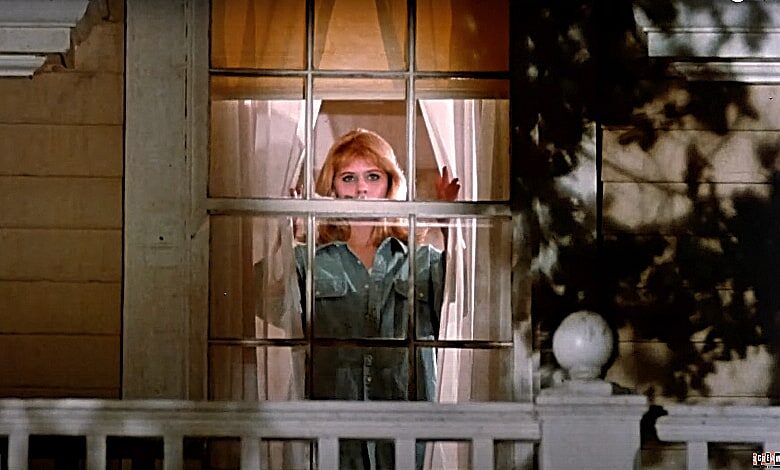
Wes Craven’s “Deadly Friend” (1986) was the filmmaker’s major studio attempt to recapture lightening in a bottle.
The movie came after Warner Bros. gave the master of horror a substantial budget after the success of “A Nightmare on Elm St.” (1984). It was not Craven’s first attempt to find another Freddy Krueger-sized zeitgeist-loving hit and, fortunately, it’s not his worst one, either.
That would be his 1989 folly, “Shocker.”
Like Daniel LaRusso and his mother, our protagonist, Paul (prolific voice actor Matthew Laborteaux) moves to a new neighborhood with his single mom and, rather than learning the secrets of karate, arrives with his robot, BB (voiced by Charles Fleischer).
Paul’s breakthrough in robotics and understanding of the human mind make him a hot priority in scholarly circles.
Outside of his classroom breakthroughs, he befriends Tom (a likable Michael Sharreett) and Samantha (Kristy Swanson), who is frequently abused by her rotten father. When a tragedy strikes, Paul utilizes his scientific brilliance to reanimate a deceased “friend” and finds himself protecting a murderer in the process.
RELATED: ‘Basket Case’ – Gritty ’80s Horror, No Apologies
Unfortunately, Craven’s attempt to adapt Diana Henstall’s deeply felt and very good 1985 novel, “Friend,” with no less than Bruce Joel Rubin as the screenwriter, was met with obnoxious studio interference. An attempt to alter Craven’s earnest teen thriller into a slasher movie resulted in studio-imposed cuts and edits to add gore and nonsensical story elements.
Some of these late additions are admittedly effective, as Craven’s ability with nightmare sequences is evident. Yet, “Deadly Friend,” as entertaining as it is, too often teeters between the compelling and the ridiculous.
“Deadly Friend” is not a children’s film, but often comes across as one.
The first act puts heavy emphasis on the cute, chirping BB. Later, there are moments of jolting horror, broad comedy and teen movie romance that come out of left field.
The result is a nutty guilty pleasure, as flawed but fascinating as Craven’s equally uneven “Vampire in Brooklyn” (1995).
The editing room compromise is easy to see, but it’s still fun and sweet in a way you’d never expect from the director of “The Hills Have Eyes.” Had it been more Stephen King and less R.L. Stine, it could have been a classic.
The angle of an ’80s teen “Frankenstein” is enough to keep it gripping, but the unintentional hilarity within the third act (particularly the what-were-they-thinking final scene and the awful end credits music) renders it as camp.
There’s also the basketball scene, which is why this is well remembered by genre fans – it’s as outrageous as you’ve heard; give Craven gross points for showmanship.
RELATED: Here’s Why ‘House’ Stands Out from Other ’80s Horror Flicks
I like Laborteaux, who comes across like a more intense Keith Gordon and Swanson is charming and luminous in her first starring role (’86 was also the year she had featured roles in “Ferris Bueller’s Day Off” and “Pretty in Pink”).
Except for Swanson, none of the main actors appear to be the right age for their roles, as Laborteux and Sharrett seem slightly too old and Anne Twomey, playing Paul’s mother, doesn’t seem old enough.
Another aspect that doesn’t add up: this supposedly takes place in an upper-class neighborhood, but there’s a biker gang that frequently turns up and Anne Ramsay’s gun toting nut lives down the street.
It’s amusing that Paul’s eggheaded mentors note how BB is supposedly evolving in his intelligence, as the robot’s dialog is primarily gibberish. The robot, coming after similar ‘bots in “Rocky IV” and “Short Circuit,” is eye catching in its design but really clunky. Having the reanimated monster move robotically is sometimes creepy, but mostly a silly touch.
BREAKING; Finally! The much-requested-for Wes Craven horror/sci-fi favorite DEADLY FRIEND short circuits onto Blu-ray for the first time on Oct 12th!
Early details & Pre-order @ https://t.co/RqoijxHUeU and https://t.co/1LRRulCknH pic.twitter.com/BWoyVLftUl
— Scream Factory™ (@Scream_Factory) August 10, 2021
“Jacob’s Ladder” scribe Rubin wrote this, though his work, as well as Craven’s, was undermined by a studio that wanted a mainstream home run. Craven typically delivers, but this has an identity problem to rival the reanimated monster at its center.
As blood soaked as this gets, its actually enjoyable and generates more rooting interest than you’d expect. Because the protagonist/victim is so sweet and what happens is so awful, it’s easy to get emotionally invested, even in something as goofy as this.
“Deadly Friend” remains a curiosity item for Craven completists with genuine cult appeal, though it’s closer to as teen comedy than a genuine horror movie.
That’s a big problem.
